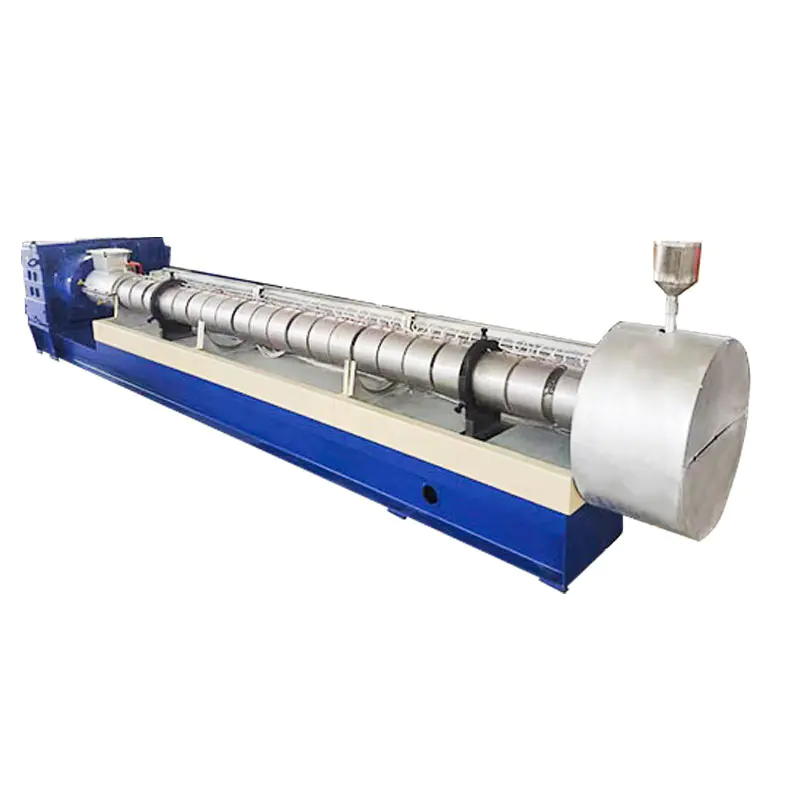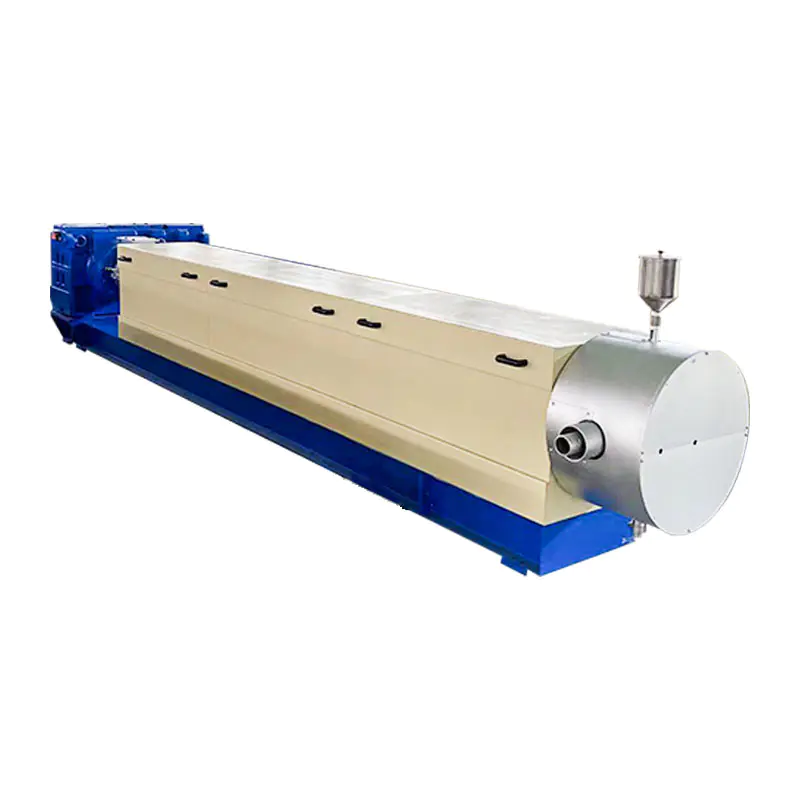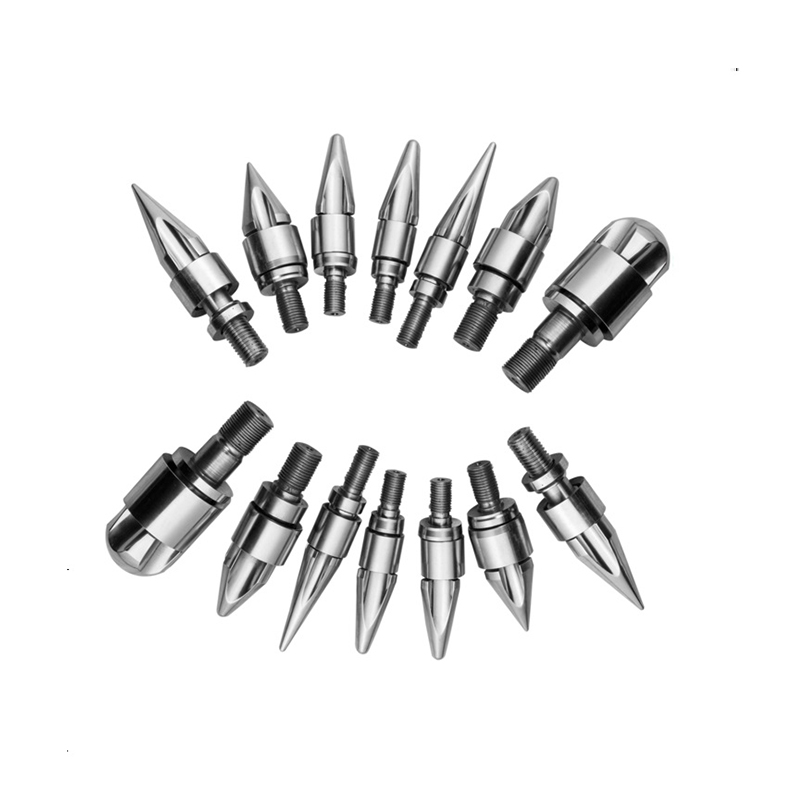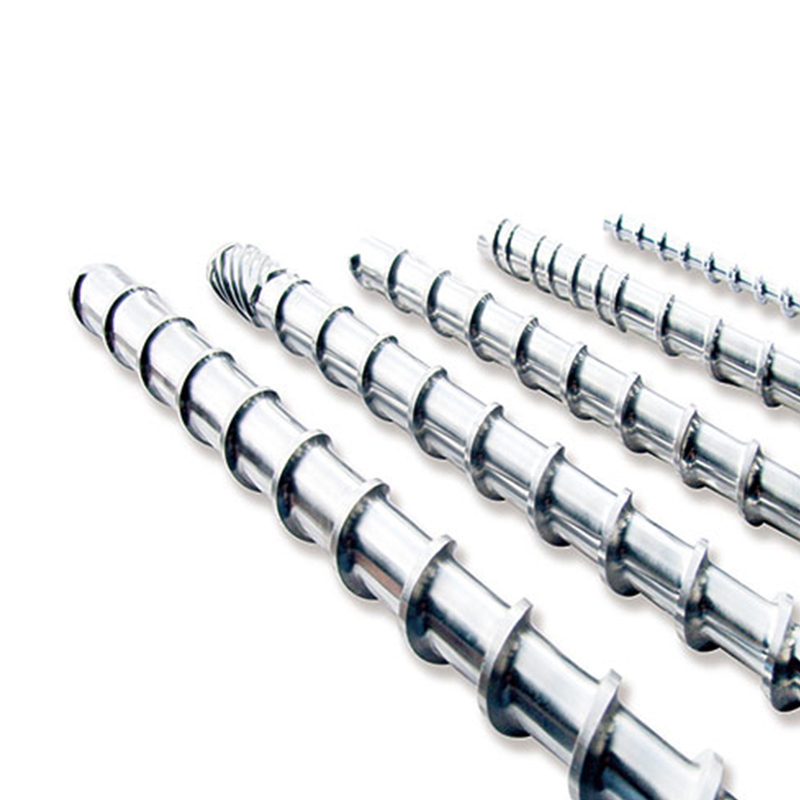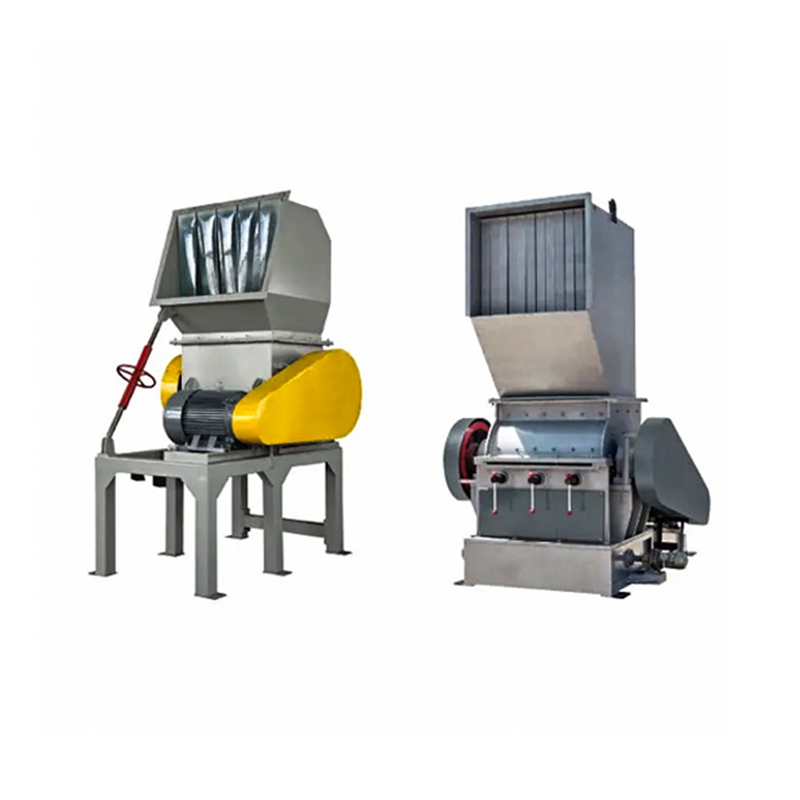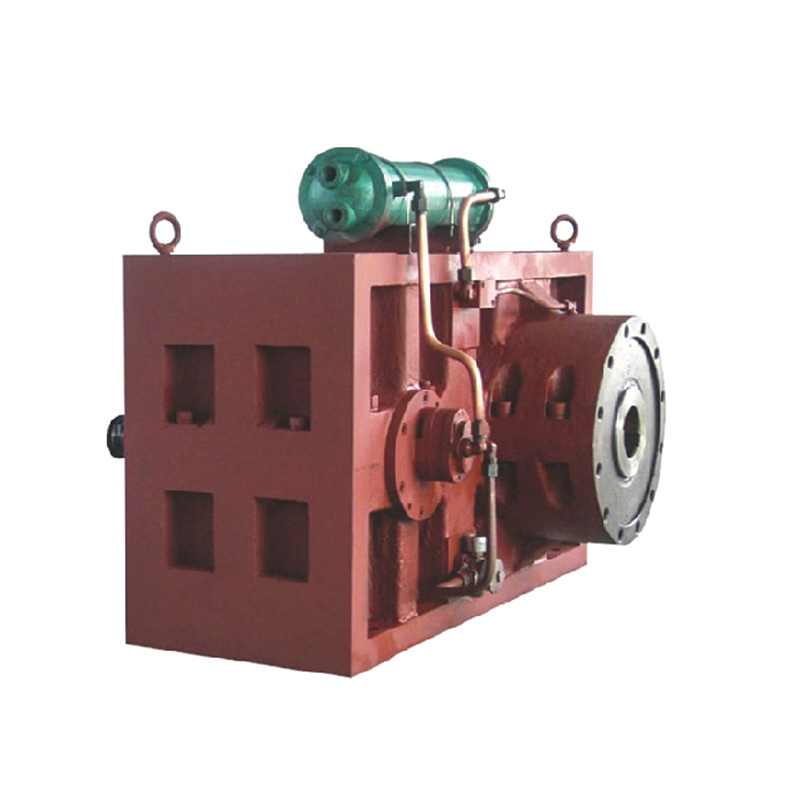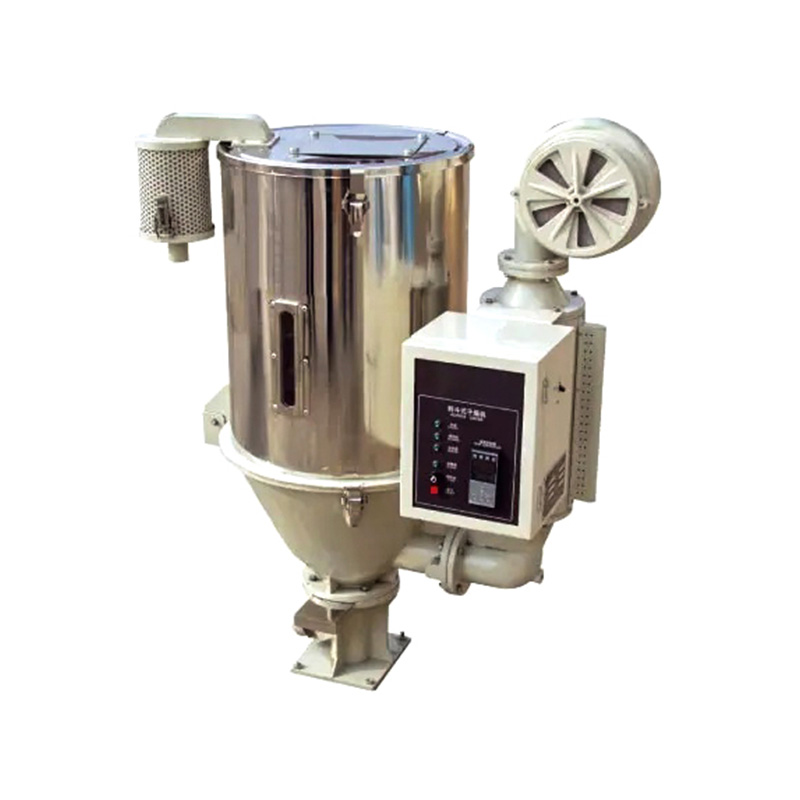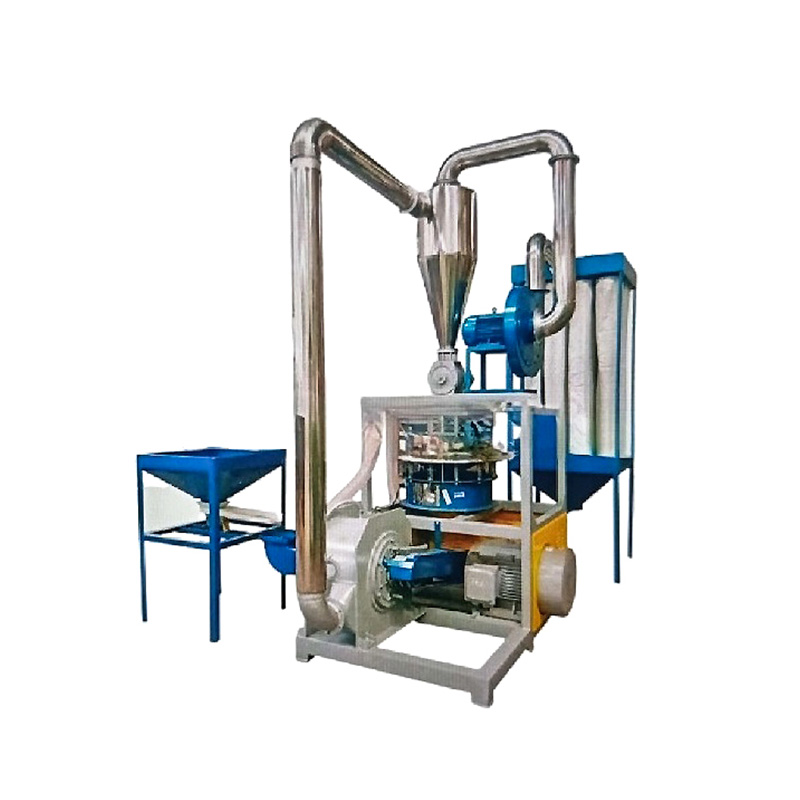Conical twin-screw extruders are critical workhorses in demanding polymer processing applications, particularly PVC and wood-plastic composites (WPC). The screw-barrel interface faces extreme pressures, abrasive fillers, corrosive additives, and high temperatures. Selecting the optimal barrel lining material is paramount for performance, longevity, and cost-effectiveness. Bimetallic linings represent a technologically advanced solution increasingly favored in these challenging environments.
1. Superior Resistance to Abrasive Wear
-
The Challenge: Processing materials containing minerals (calcium carbonate, talc), glass fibers, or wood flour rapidly accelerates wear on standard nitrided steel barrels. This wear deteriorates barrel geometry, increases clearance, reduces output, compromises melt quality, and shortens component life.
-
The Bimetallic Solution: Bimetallic linings feature a wear-resistant alloy layer metallurgically bonded (typically centrifugal casting or specialized welding techniques) to a tough steel base. This alloy layer is significantly harder (often exceeding 60 HRC) than nitrided surfaces (approx. 65-72 HRA, equivalent to ~30 HRC). Common alloys include high-chromium white irons (e.g., ASTM A532 Class III Type A) or complex carbides in a nickel-chromium-boron matrix. This hardness directly translates to extended service life when processing highly abrasive compounds.
2. Enhanced Corrosion Protection
-
The Challenge: Processing PVC, flame-retardant materials, or certain additives releases corrosive compounds (HCl, acids) during extrusion. Nitrided layers, while hard, offer limited corrosion resistance and can be penetrated, leading to pitting and accelerated degradation.
-
The Bimetallic Solution: The alloy layer in bimetallic linings typically contains high chromium content (often 25-30% or more). Chromium forms a passive oxide layer that provides inherent resistance to chemical attack from common polymer processing byproducts, significantly outperforming standard barrel steels in corrosive environments.
3. Improved Thermal Stability and Heat Transfer
-
The Challenge: Consistent thermal management is crucial for melt quality and output stability. Excessive wear or localized degradation can disrupt heat transfer efficiency. Standard materials can experience dimensional instability or softening at sustained high operating temperatures.
-
The Bimetallic Solution: The metallurgical bond ensures efficient heat transfer from the alloy layer through the steel base to the barrel cooling channels. High-performance bimetallic alloys maintain their hardness and dimensional stability at elevated processing temperatures common in conical extruders (often exceeding 250°C/480°F), contributing to more stable process control.
4. Extended Barrel Service Life and Reduced Downtime
-
The Impact: The combination of superior abrasion resistance and corrosion protection directly translates to a significantly longer operational lifespan for the barrel compared to nitrided steel. This reduces the frequency of costly barrel replacements.
-
Operational Benefit: Longer component life minimizes unplanned production stoppages for barrel refurbishment or replacement, maximizing machine uptime and overall equipment effectiveness (OEE).
5. Maintaining Performance and Output Consistency
-
The Challenge: As a standard barrel wears, the increasing clearance between the screw flights and the barrel wall leads to reduced pumping efficiency, lower pressure generation, inconsistent melt quality, and decreased output rates. This often necessitates premature screw/barrel replacement even before catastrophic failure.
-
The Bimetallic Advantage: The exceptional wear resistance of the bimetallic lining preserves the original barrel bore geometry and clearance for a much longer period. This maintains consistent pumping efficiency, pressure development, melt homogeneity, and stable output throughout the barrel's extended service life.
6. Cost-Effectiveness Over the Long Term (Total Cost of Ownership)
-
Initial Investment vs. Lifetime Cost: While the initial purchase price of a bimetallic barrel is higher than a nitrided steel barrel, the evaluation must consider total cost of ownership (TCO).
-
TCO Factors: The dramatically extended service life, coupled with reduced downtime, lower frequency of replacements, and sustained production efficiency, often results in a lower cost per operating hour or per ton of material processed. This makes bimetallic linings a strategically sound investment for high-wear applications.
Operational Considerations
-
Machining & Repair: Bimetallic linings are very hard. Machining or honing requires specialized equipment and expertise. Field repairs are generally more complex than with nitrided steel. Proper handling during installation and operation is essential.
-
Screw Compatibility: The extreme hardness of the lining necessitates the use of screws with hardened flight tips or protective coatings to prevent accelerated screw wear against the harder barrel surface.
-
Optimal Application: The highest return on investment is realized in applications involving highly abrasive and/or corrosive materials where standard barrels exhibit unacceptably short lifespans.



 عربى
عربى


